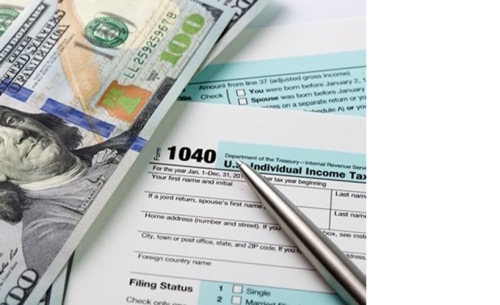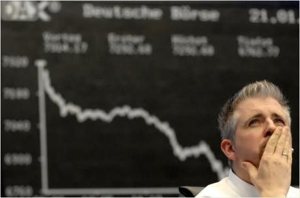By Barry Elias | Friday, 18 Dec 2015 06:56 AM

The way we tax is obsolete.
More than a century has passed since the inception of the federal income tax. It’s safe to say, this system has completely broken down. The complex, voluminous tax code — included in the 70,000-plus page CCH Standard Federal Tax Reporter — needs a revolutionary overhaul.
The current system doesn’t raise nearly enough money, social security is nearing insolvency, the administrative cost is exorbitant, and economic growth is actually impeded.
We need tax reform that will increase investment, productivity, employment, income, purchasing power, and economic growth, while keeping inflation and tax compliance costs low. I believe my tax plan will achieve all of these objectives.
The purpose of the federal tax is to collect enough revenues to pay for the government’s annual expenditures. We spent nearly $3.7 trillion in this fiscal year 2015, but only collected about $3.2 trillion, leaving a shortfall of nearly $500 billion, which must be borrowed, and we pay interest on this debt.
Furthermore, we forgo tax revenue due to deductions, exclusions and other preferential tax treatments. Last year alone, that amounted to roughly $1.2 trillion. New types of transactions have spawned an underground economy that is valued at close to $2 trillion per annum, which goes completely unreported. Included in this figure are transactions that occur on eBay and Airbnb; Bitcoin trading; illegal drug trafficking and distribution; domestic assistance; babysitter services; and lemonade stand revenue: The list is endless.
Due to the underground economy, the U. S. Treasury loses nearly $400 billion of tax revenue every year. In addition, social security taxes are only collected on the first $118,500 of earned income. The professional athlete earning $10 million, for example, pays no social security tax on nearly 99% of his pay.
To make matters worse, complying with the current arcane system – one that looms large as a nuisance on our calendars in the months leading up to April 15 – has a hidden cost totaling hundreds of billions of dollars each year. This expense includes tax preparation professionals, financial advisers, estate planners, attorneys, lobbyists, Internal Revenue
Service agents, and the time spent by all parties involved. Nearly 6 billion hours are invested in this activity each year.
Tax compliance actually impedes economic growth. We can use the savings and 6 billion hours of time more productively to grow the economy. Our focus should shift towards making value-added goods and services at more competitive prices, rather than complying with an ineffective and inefficient tax code. The environment has also been harmed as we destroy forests to accommodate the massive printing of forms, manuals and instruction booklets.
Lost revenue and the cost to comply with the current federal tax system probably exceed $2 trillion. This is an extraordinary problem that yearns for a substantial solution.
Huge issues have been tackled at other times in our history. At the dawn of the 20th century, when the NY Central Railroad was forced to convert from steam locomotive to electric trains, the $70 million cost nearly matched their $80 million of annual revenues.
Nevertheless, management figured out a way to lay new tracks underground, while the railroad continued to operate. Incidentally, this investment created a huge, unexpected economic boom. As it turned out, Park Avenue was built over the tracks, permitting air rights to be leased to developers.
Herculean problems call for out-of-the-box measures.
My solution to the current tax conundrum is streamlined and elegant. Instead of taxing monetary inflows, such as income, I propose assessing what is done with the money: it is either saved or spent, and we can derive revenue from both to balance our annual budget.
This plan will minimize tax rates and administrative costs, while maximizing the tax base and transparency. It will also increase investment, productivity, employment, income, purchasing power, and economic growth over the long term for the general population, while keeping a lid on inflation.
My proposal will eliminate all current forms of federal taxation. These taxes include the following: income, social security, Medicare, disability, interest, dividends, capital gains, gifts, inheritances, and corporate profits.
They would be replaced by a tax on savings and consumption. Savings will be assessed at a lower rate than consumption, since a dollar saved generates significantly more jobs and income for society than a dollar spent.
The savings that are assessed would include only liquid financial assets, such as stocks, bonds and cash. These products typically involve the trading of existing assets or the restructuring or retirement of existing debt, instead of the creation of new assets. Too often, financial assets are a method for transferring wealth rather than creating value.
Hence, these savings need to be subject to tax, albeit at a much lower rate than that for consumption.
Excluded from these savings would be direct capital investment, since this activity generates strong employment and income gains. Physical land and buildings would also be excluded due to strong productivity potential, and a low level of liquidity, which might cause extreme market volatility in the event of strong selling pressure to meet tax obligations.
This proposal would balance the federal budget at current spending levels, preserving key social programs like social security, Medicare, disability, Medicaid, food stamps, other welfare programs, and the earned income tax credit, while maintaining a strong defense and homeland security apparatus.
Savings in the form of equities, bonds and cash for individuals, corporations and tax-exempt organizations total nearly $189 trillion, according to the Federal Reserve.
From this amount, the following liquid financial assets would be excluded from taxation:
- wages and salaries, or $7.9 trillion;
- $100,000 for a family of three, or $10 trillion;
- retirement funds, or $25.7 trillion;
- education IRAs and 529 plans, or $250 billion;
- direct investment for capital expenditures, or $3.6 trillion (20 percent of GDP);
- and tax-exempt organizations, or $4 trillion, for a total $50 trillion.
The net taxable amount after exclusions would approach $139 trillion. A savings tax rate of 2 percent on this figure would raise approximately $2.8 trillion.
Instead of reporting dividends, interest and capital gains, financial institutions would report an average daily balance of liquid financial assets on hand over the course of the year — to minimize or eliminate tax arbitrage opportunities — and send the tax directly to the federal government, another cost saver for the American people. I assume most people will not stash much cash under a mattress, since they would forgo a return on their money, and it’s not a safe methodology.
Americans consume about $12.4 trillion annually in goods and services, according to the Bureau of Economic Analysis. Taxing consumption at 10 percent would raise about $1.2 trillion. An annual tax refund of $3,000 would be provided to each family of three to offset the first $30,000 of essential consumption expenditures, costing $300 billion each year.
Therefore, the total revenue raised would be around $4 trillion: $2.8 trillion from savings and $1.2 trillion from consumption. These revenues would offset the current $3.7 trillion annual budget plus the $300 billion yearly consumption refund.
To generate these tax rates, we divide the tax revenue by the pre-tax amounts for both savings and consumption. That is, a 10 percent consumption tax on a $1 (pre-tax) retail item would generate 10 cents of tax revenue, resulting in a post-tax amount of $1.10 ($1 plus 10 cents).
The Fair Tax proposal, which was presented to Congress in the late 1990s, would divide the 10 cent tax revenue by the post-tax amount of $1.10, to arrive at a consumption tax rate of 9.1 percent. By using the post-tax amounts, as used in the Fair Tax model, the tax rates for my plan would be less than what I have stated: 1.96 percent for savings (instead 2 percent) and 9.1 percent for consumption (instead of 10 percent).
The fair tax proposal would subject consumption to a pre-tax rate of 30 percent (10 percent in my plan) and a post-tax rate of 23 percent (9.1 percent in my plan). The Fair Tax plan does not include a savings tax, but does eliminate all existing federal taxes.
In my view, the Fair Tax plan is far too regressive. It hits the poor and middle class hardest, since they consume a much greater percentage of their income and wealth, as compared with those in the upper economic strata.
I believe my plan is fairer in this regard, and will have mass appeal.
The poorest would no longer pay 15 percent for social security and Medicare as they do today; they would likely pay no other federal taxes; and they would still have access to Medicaid, food stamps, other welfare programs, and the earned income tax credit.
The wealthy would no longer pay any of the current federal taxes, including those on income, payroll, interest, dividends, capital gains, gifts, and inheritance. Expenditures on estate planning would be negligible, and wealth will be preserved, since the average annual return on investment will most likely exceed 2 percent.
The middle class would benefit from all of these proposals, including the participation in the earned income tax credit program and a reduction in tax compliance expenditures.
These benefits and savings can then be directed toward the consumption of essential goods and services, such as food, housing, clothing, healthcare, and education.
Corporations will experience tax-free profits and dividends; lower costs of production, including tax-free labor and capital; and severely reduced tax compliance expenditures. As a result, there would be downward pressure on the price of goods and services produced, which would increase purchasing power for the masses.
On the government side, the strategy would virtually balance the federal budget at current spending levels and make social security and Medicare more solvent.
This simple method would assess the most money at the lowest rate with the least cost and most visibility. This transparency would ensure that virtually all individuals would feel the impact of any tax rate increase immediately, resulting in a call for justification or reform. This check and balance would likely keep the rates low and stable over the long term.
Today, special interest tax benefits are visible to a very select few, resulting in higher tax rates and tax bases for others to offset the lost revenue to the government. This system would also allow us to focus more on the creation of value-added products and services instead of on minimizing the tax liability.
By excluding labor and capital from taxation, employment, investment and productivity will rise, generating greater income, stronger purchasing power, and more robust and sustainable economic growth, while keeping inflation in check.
Low tax rates will likely increase net capital inflows from overseas, including some of the more than $22 trillion of U.S. financial assets that reside abroad, as well as new foreign assets. If these net inflows materialize, tax rates can be lowered while maintaining a balanced federal budget. Moreover, reductions in government spending would allow rates to fall further.
My tax proposal is seen as fair, effective and elegant in its simplicity by a large swath of the political spectrum, including liberals and conservatives. The time has come to end federal taxation as we know it.
My wife, Billie Elias, contributed significantly to this article.
Barry Elias is an economic policy analyst. To read more from him, CLICK HERE NOW.
© 2015 Newsmax Finance. All rights reserved.


